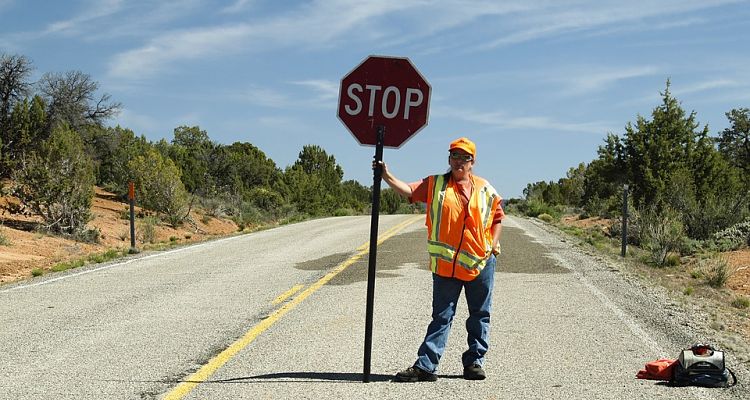
If you have just moved into your new dream home then we say congratulations to you. There is nothing more meaningful than settling in at a new location especially since this is a New Year and a new decade. When moving into a new home, it’s crucial to assess the existing safety measures and make necessary upgrades. As you move into a new home, it’s the perfect time to evaluate the structural integrity of the property, including the condition of the roof, walls, and foundation.
And when the movers have gone and all your items have been placed safely inside your home, it will be time to start concentrating on properly securing your home for yourself and your family. Burglary and fire hazards are two of the foremost circumstances that could happen to a home if it isn’t well protected.
Protecting yourself during and after a move is as crucial as securing your belongings. Prioritize safety when you move into a new home by conducting a thorough walk-through to identify any hazards like loose floorboards or exposed electrical wires. A well-crafted safety guide can be your go-to resource for ensuring you feel safe in your new home. Don’t proceed without understanding basic moving safety tips These are the main ones that you should never forget.
Moving Into an Apartment Versus a House
When deciding between moving into an apartment or a house, there are various safety considerations to make. The Bureau of Justice Statistics reports that households headed by renters experienced burglaries at higher rates compared to those that own homes. Despite the fact that houses normally provide more space and privacy, they can also be more prone to break-ins because they often have numerous entryways and may not have a security system.
In contrast, apartments often feature locked entrances, security systems, or doormen, making them generally more secure. Nevertheless, living close to others can also bring with it a unique set of safety issues, such as the risk of theft or noise inconveniences.
What Should Be In the Home Safety Checklist
Keep in mind the significance of home safety in the middle of all the turmoil and excitement. You can make sure that your new house is a secure and safe place for you and your family to live by making a home safety checklist. Checking smoke and carbon monoxide detectors, securing windows and doors, establishing a security system, looking for leaks in the plumbing system, and making sure electrical systems are working properly are some crucial things to put on your home safety checklist.
To make the process easier, consider using a new home checklist that outlines all the safety features you need to inspect before settling in. Your home checklist should also include testing all circuit breakers to ensure they’re functioning as they should, It’s also vital to prepare emergency evacuation plans for fires or other disasters. Always follow safety precautions, such as keeping emergency contact numbers readily available and creating an evacuation plan.
Smoke Detectors
Statistics show that fire is the second leading cause of accidental death at home. Burglary is also another crime that is plaguing so many states these days that it even eclipses the murder rate. There are a few simple and inexpensive measures that you can take that would prevent the aforementioned circumstances from occurring in your home and affecting those that you love.
The U.S. Fire Administration states that a working smoke alarm cuts the chances of dying in a reported fire in half. Smoke alarms are highly recommended for the home, but what good would it be if it isn’t working properly? Therefore, you need to change the batteries as often as you can to ensure that the alarm sounds off at the appropriate time. Even if you have batteries in, you should always try to check your smoke alarm as often as each month. Maybe quite as popular as smoke alarms, carbon monoxide detectors are also highly important and becoming a necessity in the home. For optimal fire safety, keep a fire extinguisher in the kitchen and another near the electrical panel, as these are common areas where fires can start
Electrical System
Check the safety and functionality of the electrical system. Exposed wires that could result in electrocution or electrical fires are among the first things to look out for. This includes inspecting all electrical outlets, light switches, and any visible wire in the walls or ceiling. Additionally, it’s critical to look for overloaded circuits, which can harm appliances and provide a fire risk.
Regularly inspect your circuit breakers to ensure they are not overloaded, as this can be a fire risk. Before using any appliances or electrical equipment, take the time to assess your electrical system and fix any issues to make sure your home is secure for you and your family.
Advanced Home Security Systems
You’ve got your locks in place, smoke detectors up and running, and even a traditional alarm system. But what about taking your home security to the next level? Welcome to the era of smart home security, where your smartphone becomes your security command center. Imagine unlocking your front door with facial recognition or receiving real-time alerts about suspicious activity, all from an app on your phone. Smart locks offer keyless entry and the ability to grant temporary access to guests. Facial recognition systems can distinguish between family members and potential intruders, adding an extra layer of security.
The Insurance Information Institute reveals that homes without a security system are 300% more likely to be burglarized. While smart systems offer convenience and enhanced features, they’re not without drawbacks. The most glaring is the potential for hacking. If someone gains control of your security system, the consequences could be severe. Additionally, these systems often come with a higher price tag and may require a monthly subscription. So, what’s the verdict? If you’re living in a densely populated area or have valuable possessions, the benefits of advanced systems likely outweigh the risks. For those in more secluded areas, traditional systems might suffice. Either way, always keep your software updated to protect against vulnerabilities.
Locks and Security
Check that all the external doors and windows have functional locks before moving in to make sure your home is safe from unauthorized invaders. In some circumstances, it can be required to completely replace the locks, particularly if former tenants or owners may still retain the keys. By doing this, you can be confident that you have full control over who has access to your house and that it is secure. Prioritize safety when moving into a new home by immediately replacing any outdated locks and installing a modern security system.
It’s important to think about implementing a security system in addition to securing your home with appropriate locks. 34% of burglars enter through the front door. Simple door and window alarms to more complicated systems with motion detectors, cameras, and even remote monitoring are all examples of security systems. A security system can provide you with a sense of security and peace of mind in addition to providing an additional layer of protection for your house.
Carbon Monoxide Poisoning
A severe health risk that might arise while moving into a new house is carbon monoxide poisoning. Gases like carbon monoxide, which has no smell or color, can be released by appliances like gas stoves, water heaters, and furnaces.
Research has proven that close to 400 Americans die from the effects caused by carbon monoxide poisoning. There are many things in your home that can contribute to carbon monoxide. These include water and room heaters and even your furnace, among other things. Headaches, feeling fatigued, nausea and dizziness are all symptoms that you have to look out for as they can indicate carbon monoxide poisoning.
Assuring that all gas appliances in the home are correctly installed and maintained is one of the most crucial measures to prevent carbon monoxide poisoning. The furnace, water heater, and any other gas appliances should all be checked and cleaned by a professional before you move in. Additionally, carbon monoxide detectors should be installed throughout the house, especially in rooms with gas equipment. Don’t overlook the HVAC system; a well-maintained heating and cooling system can prevent potential fire hazards.
Plumbing System
Look out for leaks because they could damage your house and force expensive repairs. Look for any indications of leaks or water damage around the water heater, in the basement, and under sinks. Address issues promptly to minimize damage.
The functionality of all faucets and toilets is another crucial aspect to examine. This includes examining the water pressure, making sure there are no blockages or clogs, and looking for any leaks or drips. Address any issues immediately to prevent future damage and ensure your plumbing works well. Consistent home maintenance, like checking for leaks and testing alarms, can go a long way in ensuring long-term safety.
Heating Systems
Imagine this scenario: You’re wrapped up warmly on a frosty winter evening in your inviting new residence. You’ve turned up the heat, but are you aware of the silent peril that could lurk within your heating system? A malfunctioning furnace or boiler isn’t merely an annoyance—it poses a real threat. Carbon monoxide, an invisible and scentless gas, could seep out of a neglected system, jeopardizing you and your loved ones. So what should you do next? Prioritize scheduling an expert evaluation of your heating setup before winter fully descends. Insist on a comprehensive report that scrutinizes not just for carbon monoxide emissions but also for other possible dangers.
Even if your heating system passes the inspection, regular maintenance is key. Think of it as a health check-up for your home. Replace filters every three months and keep an eye out for any unusual noises or decreases in efficiency. If you spot something off, don’t hesitate to call in the experts. And here’s a pro tip: Install carbon monoxide detectors near your heating system and bedrooms. These life-saving devices are your second line of defense, alerting you immediately if there’s a dangerous leak. Trust us, this is one area where cutting corners is not an option.
- Consider installing a smart thermostat to regulate heating and reduce the risk of system malfunctions.
- Use radon test kits to check for this odorless, colorless gas that can cause lung cancer.
- Install surge protectors to safeguard your electronics and electrical systems from voltage spikes.
- Consider a whole-house water filtration system to ensure safe drinking water and reduce the risk of plumbing issues.
- Use baby monitors with video capabilities to keep an eye on children or elderly family members for added safety.
Lifting and Carrying Techniques
You should follow the principles of heavy lifting, which include maintaining your spine alignment as straight as possible throughout the procedure, to ensure your safety and prevent injury. When taking up large objects off the ground, bend at the knees rather than the waist. To keep your equilibrium, carry heavy objects close to your body and avoid twisting your body while lifting or carrying. If you must twist or turn, do so from the hips rather than the feet.
Using a dolly can make it much easier to move large objects from your old home to your new one. You can typically rent one from your neighborhood hardware shop or moving company if you don’t already have one.
Burglary
According to the FBI, a burglary occurs every 22.6 seconds in the U.S. As we said earlier, burglary is one of the top crimes these days, and even more so the economy has taken a nose dive. You can do your part by keeping the burglar at bay by ensuring that your windows and doors and well secured. If your home features flimsy locks on the doors and windows, it would be wise to head out to a department store and purchase locks that would reinforce what you already have. Burglars tend to gravitate to a home that is shrubbery or one that has a lot of trees to hide out in, so remember to always cut them low and keep them that way.
Emergency Exits
If you’ve planned your emergency exits, you’re one step ahead in this high-stakes moment. Whether you’re in an apartment with a labyrinth of hallways or a house with multiple floors, knowing your emergency exits can be the difference between life and death. Apartments often have clearly marked exit routes, but houses require a more personalized approach. Map out multiple exit paths from each room, and if you’re in a multi-story home, invest in escape ladders for the upper floors. Run drills to make sure everyone knows the quickest way out, and designate a meeting spot away from the building.
Emergency exits aren’t just about getting out; they’re also about keeping danger out. Reinforce doors leading to safe rooms or basements with deadbolts and steel frames. In apartments, get to know the fire escape routes and remember, elevators are a no-go during fires. Keep a bag of essentials—think first aid, flashlights, and important documents—near your primary exit. This isn’t about paranoia; it’s about preparedness. And in a world where uncertainties loom large, being prepared is not just smart—it’s non-
Take Inventory of Your Valuable Belongings
Make a list of your valuable possessions. Even if you hire a reputable moving company, mishaps can still occur, so you need to make sure your priceless possessions are secure and tracked down during the move. Make a list of all your property, including things like jewelry, antiques, and artwork, to get started.
For insurance purposes, think about taking pictures of each item, noting any existing damage, and keeping a record of their value in case you need to file a claim against the moving company.
Children and Pets
Having too many people involved, especially those prone to accidents, is not advisable. The best thing you can do for your family’s safety during the relocation if you have children or pets is to either keep them occupied and contained in a designated safe zone area or, even better, have a friend or family member watch over them outside your home.
- Use pet-friendly motion detectors to avoid false alarms triggered by pets.
- Install corner protectors on furniture to prevent injuries to children.
- Consider using smart plugs to remotely turn off appliances, reducing fire risks.
- Use reflective house numbers to make it easier for emergency services to locate your home.
- Install a peephole in your front door to safely identify visitors before opening the door.
Childproofing Your New Home
Childproofing is a game-changer, and it’s not something to put off. You might think your home is safe, but kids have a knack for getting into situations that would never even cross an adult’s mind.
First off, let’s talk about furniture. Those sleek, tall bookshelves and TV stands might look great, but they’re basically climbing frames for kids. Secure them to the wall using furniture straps or brackets. And don’t forget the kitchen; those cleaning supplies under the sink are a cocktail of danger. Install safety latches on cabinets and drawers to keep curious hands at bay.
Now, onto the stairs. If you’ve got a mini explorer on your hands, stairs can be like Everest for them. Safety gates are your new best friend. Install them at the top and bottom of staircases. Opt for gates that screw into the wall rather than the pressure-mounted type; they’re more secure. And here’s a pro tip: place the gate a few inches back from the top step for added security.
Check Your Important Documents
Ensure that all important documents are consolidated in one location. This includes documents like your birth certificate, passport, insurance policy, lease, or mortgage documents. Put all of these crucial documents in a folder, and be sure to store them somewhere safe and secure. These documents can be challenging to replace and take time, so you don’t want to lose them in the chaos of the move.
It’s essential to update your address on any relevant accounts in addition to gathering and arranging your paperwork. Your driver’s license, credit cards, and subscriptions are examples of this. Update your address promptly to ensure you receive important communications and bills on time.
Color Your Move Green
Make your move a green move by adopting eco-friendly habits and making thoughtful decisions to protect the environment. This could entail using reusable packing supplies, selling or donating unwanted things rather than throwing them away, and using a company with a reduced carbon footprint. Additionally, think about the use of an electric or hybrid car to transfer your possessions to your new house or hire a professional moving company that uses green moving techniques.
Learn About Your Neighbors
Beyond simply helping you feel more secure at home in your new neighborhood, getting to know your neighbors can have many other advantages. A sense of security might be provided by your neighbors by watching over your house while you’re gone or notifying you of any questionable activities.
They can also offer insightful information about the neighborhood, such as the best spots for dining, shopping, and exploring. Making friends with your neighbors can ultimately help you feel more secure and a part of your new community, which can make settling into a new home a more enjoyable experience.
Outdoor Lighting
In addition, the number of outdoor lights that you have around your house can also deter the burglar from attempting to rob your home. Finally, you should think about installing a security alarm system. True, you may be reluctant to spend extra money that you may have to get a security system soon after spending a lot of money to move, but you just really can’t put a price on your safety for yourself and your family. Having a security alarm system would definitely be worth it in the long run. Installing security cameras at key points around your property can significantly contribute to making you feel safe in your new home.
You can take a few additional steps to make sure your family is safe in your new home in addition to the essentials stated above. This entails looking for any potential dangers—like loose rails or uneven steps—and quickly taking care of them. It’s crucial to teach your kids about home safety, including emergency procedures and how to recognize dangers. If you have seniors in the family, consider installing grab bars in bathrooms and non-slip mats in high-traffic areas to enhance senior safety. New homeowners often underestimate the importance of a comprehensive safety guide.
Finally, think about buying home insurance to add another level of security for your family and your house. You may make sure that you and your loved ones can live in your new house in safety and security by following these procedures.
Did You Know?
- A study by the University of North Carolina at Charlotte found that about 60% of burglars would abandon a planned crime if they discovered an alarm system. So, investing in a visible, modern alarm system can act as a powerful deterrent, even before it sounds off.
- According to the National Fire Protection Association, cooking is the leading cause of home fires, yet many people overlook the kitchen when assessing home safety. Installing a fire blanket in the kitchen can quickly smother small fires before they spread.
- Research from Rutgers University School of Criminal Justice shows that neighborhoods with high concentrations of security systems experience fewer break-ins than those without. Your individual home security doesn’t just protect you; it contributes to community-wide safety.
- The Consumer Product Safety Commission reports that window falls account for about eight deaths and 3,300 injuries among children five and younger each year. Installing window guards can prevent these tragic accidents.
- A study published in the Journal of Safety Research revealed that slip and fall accidents in the home result in approximately 19,565 deaths annually in the U.S. Anti-slip mats in high-risk areas like bathrooms can be life-saving.





Leave a Comment